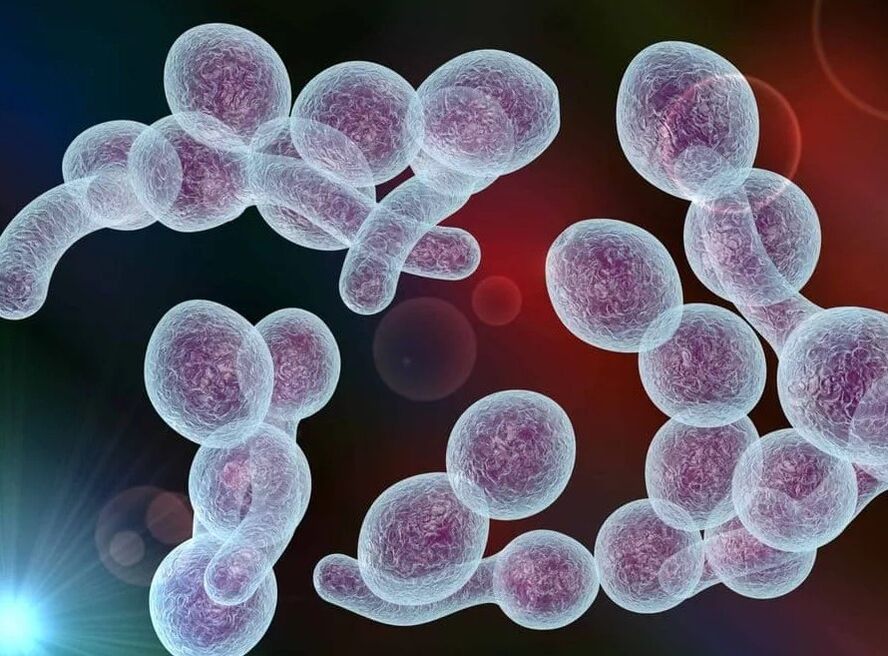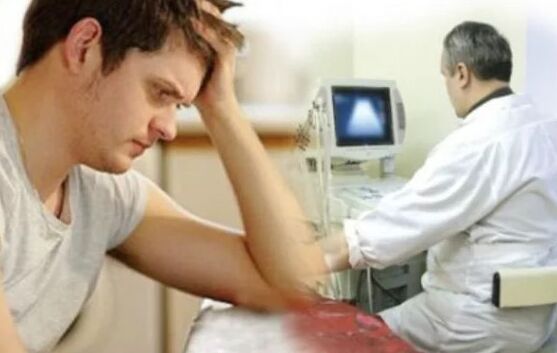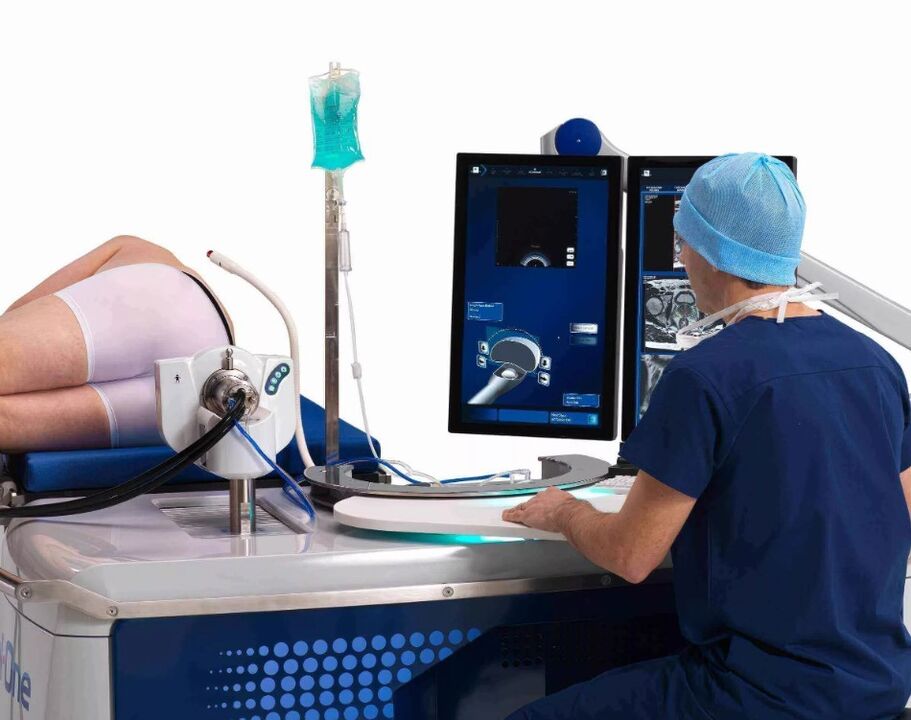An insidious male disease is prostatitis.Symptoms of prostatitis can be varied, depending on the form of the disease.Sometimes, the initial stage in the development of the disease proceeds asymptomatic.And it is very difficult to independently recognize and diagnose prostatitis.But the sooner the problem is identified, the faster and without the consequences you can get rid of it.Often hidden latent form gradually passes into chronic prostatitis.This is the danger of this male disease.Urologists around the world strongly recommend that men regularly visit specialists.In addition, any disease is better to prevent than to treat for a long time and painfully.In this article, we will analyze the main symptoms and signs of prostatitis in men, highlight their main methods of manifestation.

Types of prostatitis
All signs of prostatitis are classified depending on the type and variety of the disease.But what is prostatitis?So, prostatitis is called an infectious inflammatory process in the prostate gland in men.Basically, glandular and connective tissue is affected.Close attention to this problem began to be paid back in the 19th century.In those days, every year the number of patients with prostatitis increased rapidly.Therefore, it was necessary to develop a complex of therapy.
Today, the first symptoms of prostatitis in men can occur at the age of 21-50.The young man falls into a risk zone from the time that he begins to lead an active sex life.Unfortunately, statistics show that only 25 % of the male population regularly visit urologists.And more than 10% of this number, prostatitis of different forms is diagnosed.Therefore, it is so important to undergo examination twice a year.
You can classify prostatitis by different types.Thus, depending on the etiology, the following types of prostatitis are distinguished:
- infectious;
- stagnant;
- specific;
- not specific;
- mixed.
Depending on the area of the prostate of the doctor, the doctors note follicular, catarrhal, parenchymal, dystrophic, the abscess of the prostate, granulomatous granulomatous, stems of prostate.The main species with which doctors begin the classification and diagnosis is acute and chronic prostatitis.It is not the treatment of chronic prostatitis that provokes a prostate adenoma, gland cancer, sclerosis of the organ.
Also, the type of prostatitis can also be determined by pathogenesis:
- urethrogenic;
- hematogenous;
- calculent;
- canalicular; endocrine;
- allergic form of prostatitis
- acute bacterial prostatitis occurs onThe background of bacterial lesions of the prostate gland, Enterococci, Staphylococci, Klebsiella, Pseudomonas sticks and other types of pathogenic microorganisms.In some cases, an acute form of prostatitis can develop after a biopsy of the prostate gland.
The first symptom of this form of prostatitis is an increase in body temperature to 39-40 degrees Celsius.At the same time, different measurements can show completely different temperatures.So, measuring temperatures in the mouth, the indicators will be normal.The same thing can happen when measured in the axillary cavity.But the temperature measured the rectal way to show too high indicators.
Острый бактериальный простатит возникает на фоне бактериального поражения предстательной железы кишечной палочкой, энтерококками, стафилококками, клебсиеллой, синегнойной палочкой и другими видами патогенных микроорганизмов. В некоторых случаях острая форма простатита может развиться после проведения биопсии предстательной железы.
Первым симптомом данной формы простатита является повышение температуры тела до 39-40 градусов по Цельсию. При этом, разные замеры могут показывать совершенно разную температуру. Так, измеряя температур во рту, показатели будут в норме. То же самое может происходит и при измерении в подмышечной впадине. А вот замер температуры ректальным способом будет показывать слишком завышенные показатели.
If the process develops rapidly, the high temperature will be indicated at any type of measurement.Other symptoms of prostatitis occur immediately after increasing body temperature.These are pain that apply to:
- lower abdomen, back;
- region of the scrotum;
- crotch;
- the lower back;
- the rear passage;
- small pelvic organs. Also, a characteristic sign of acute bacterial prostatitis is rapid urination.The calls to the toilet are significantly more frequent at night.In this process, a man necessarily feels pain, rub, discomfort, burning.Also, inguinal lymph nodes can be increased, frequent constipation appears.Among other symptoms, it is worth noting signs of intoxication of the body, which manifest in the form of general weakness, muscle pain, headaches, dizziness, increased fatigue.
It should be noted that in any form of prostatitis, the sexual activity of young people is disturbed.In an acute inflammatory process, during ejaculation in the seed fluid, blood impurities can be detected.The same can happen when urinating.In such cases, a large role is played by a timely trip to the doctor.After all, taking painkillers will not relieve the problem, but only aggravate the patient's position.

Symptoms of chronic bacterial prostatitis
The chronic form of prostatitis is provoked by the same bacteria as its acute type.But, in the "chronicle" the disease passes when ignoring all signs of the disease.Also, this can happen if the first signs of prostatitis were “erased”, the disease was almost asymptomatic.After all, not every man with mild malaise, headache, fatigue will run to the doctor a urologist.Acute symptoms could go very quickly, and the inflammatory process is still developing.
Symptoms of this kind of disease are the same as with acute form.But, they arise only during the period of exacerbation.Almost always, a man experiences discomfort from urination.The process can be intermittent, sluggish.Pain during urination occurs at the very beginning and at the end.And the calls to the toilet become more frequent at any time of the day.It is important to know that chronic prostatitis is a recurrent form, and the signs will appear again after a while.
It is worth noting that chronic prostatitis is accompanied by a significant decrease in sexual activity.Roubing the tissue of the prostate gland in an inflammatory process violates the connection of the nerve endings with the center of sexual arousal.So, at first the man begins to complain about premature ejaculation.Then the erection becomes not persistent, not stable.Often it is not enough to perform full sexual intercourse.The pleasant sensations from intimacy are also reduced.All this negatively affects the patient’s mental state, libido disappears.Sexual life comes to naught.
Among other symptoms, it is important to note the following:
- discharge from the urethra after defecation, physical exertion;
- constant aching pains;
- Changing the color of the skin in the perineum;
- blockage of the ducts, which leads to suppuration;
- Cipining delay.
Signs of stagnant prostatitis in men
The congestive prostatitis is often called chronic inflammation of the stroke.This is an atypical type of disease.The main signs of this form are pain in places unusual for prostatitis-a lumbosacral plot, pain in the legs.Due to such atypical localization, often the disease is not diagnosed correctly.Therefore, the treatment is selected completely wrong.And inflammation in the prostate gland continues to develop, gaining its turns.
Pain with stagnant prostatitis is always accompanied by the following symptoms:
- weak erection;
- pain during an erection;
- premature ejaculation;
- decrease in sexual desire;
- lack of orgasm.

Over time, the pain extends to the testicular area, urethra and rear passage.Urination is also frequent and difficult.Discomfort can be felt in the pubic zone, perineum, in the lower abdomen.At the same time, a sharp pain will be given to the penis and rectum.There may be some difficulties in the process of defecation.
There is another form of prostatitis, asymptomatic prostatitis.From the name itself it becomes clear that this disease does not manifest itself in any way.This type of prostatitis is detected by accident, with any other clinical examination.So, in the analysis of the patient’s urine, an increased level of leukocytes is revealed.It is also possible to diagnose prostatitis in the absence of symptoms during direct surgical intervention in the prostate gland.
How to recognize the beginning of prostatitis?
Prostatitis is a complex disease.It is accompanied not only by a number of physiological disorders, but psychological disorders are also observed.All symptoms of the disease bring men into an oppressed, depressed state.All this can lead to a complete absence of sexual activity, protracted depression.Therefore, it is so important to carry out a full treatment of prostatitis.
Only a doctor urologist can make an accurate diagnosis.But you can recognize the first symptoms of prostatitis and independently with self -diagnosis.It’s enough to listen to your body, sensations.You can suspect the disease according to the following signs:
- Unpleasant sensations during defecation;
- burning in the perineum (long or short -term);
- frequent urge to the toilet;
- The difficult process of urination;
- “erased” orgasm;
- increased fatigue;
- constant stressful condition;
- reduction of erection.
It should be noted that these symptoms can not manifest all at once.But, at least in the presence of one of them, you need to consult a doctor.After all, timely treatment of prostatitis always passes quickly and successfully.But the chronic form of inflammation of the prostate is practically incurable, and leads to severe consequences.
Methods for treating prostatitis
Any treatment always begins with diagnosis.Very often, doctors diagnose the acute and chronic form of the disease only because of men ignorance by men of the first symptoms of the disease.But the first calls were, but they did not receive due attention.Even with frequent fatigue, it is better to visit the doctor.Based on the results of the studies, the main reason for this condition can be revealed.
So, diagnosis of prostatitis in men can take place as follows:
- ultrasound examination of the prostate;
- rectal diagnostics;
- polling the patient;
- examination of the secret of the urethra;
- urine analysis;
- blood test for laboratory research must be performed by a rectal massageprostates.But, in the case of acute prostatitis, this cannot be done.If you suspect an acute form, sufficiently ultrasound and urine analysis, which will fully confirm or refute this diagnosis.

Чтобы получить секрет простаты для лабораторного исследования необходимо произвести ректальный массаж простаты. Но, в случае острого простатита делать этого нельзя. При подозрении на острую форму достаточно ультразвукового исследования и анализа мочи, которые полностью подтвердят или опровергнут данный диагноз.
Treatment of prostatitis, as a rule, is carried out on an outpatient basis.Two basic principles of complex therapy of men are distinguished: antibacterial treatment for sanitation of foci of infection, and measures to enhance and normalize blood flow in the prostate gland (physiotherapy, massage, gymnastics).Speaking about drug treatment, a prerequisite is antibiotics.Also, the doctor must prescribe anti -inflammatory drugs, medications for eliminating pain.
In the case of chronic prostatitis, the cause of relapse is immunodeficiency.
The treatment regimen of prostatitis is selected individually for each patient.The same applies to the duration of the course.After passing the full course of antibiotics, it is important to increase immunity.Therefore, for some time a man should take immunomodulating agents, polyvitamin complexes.High efficiency in the treatment of prostatitis is characterized by electrophoresis and rinsing of the urethra with a special solution.So you can completely kill all the bacteria that could provoke the ailment, and save a man of possible relapses.


































